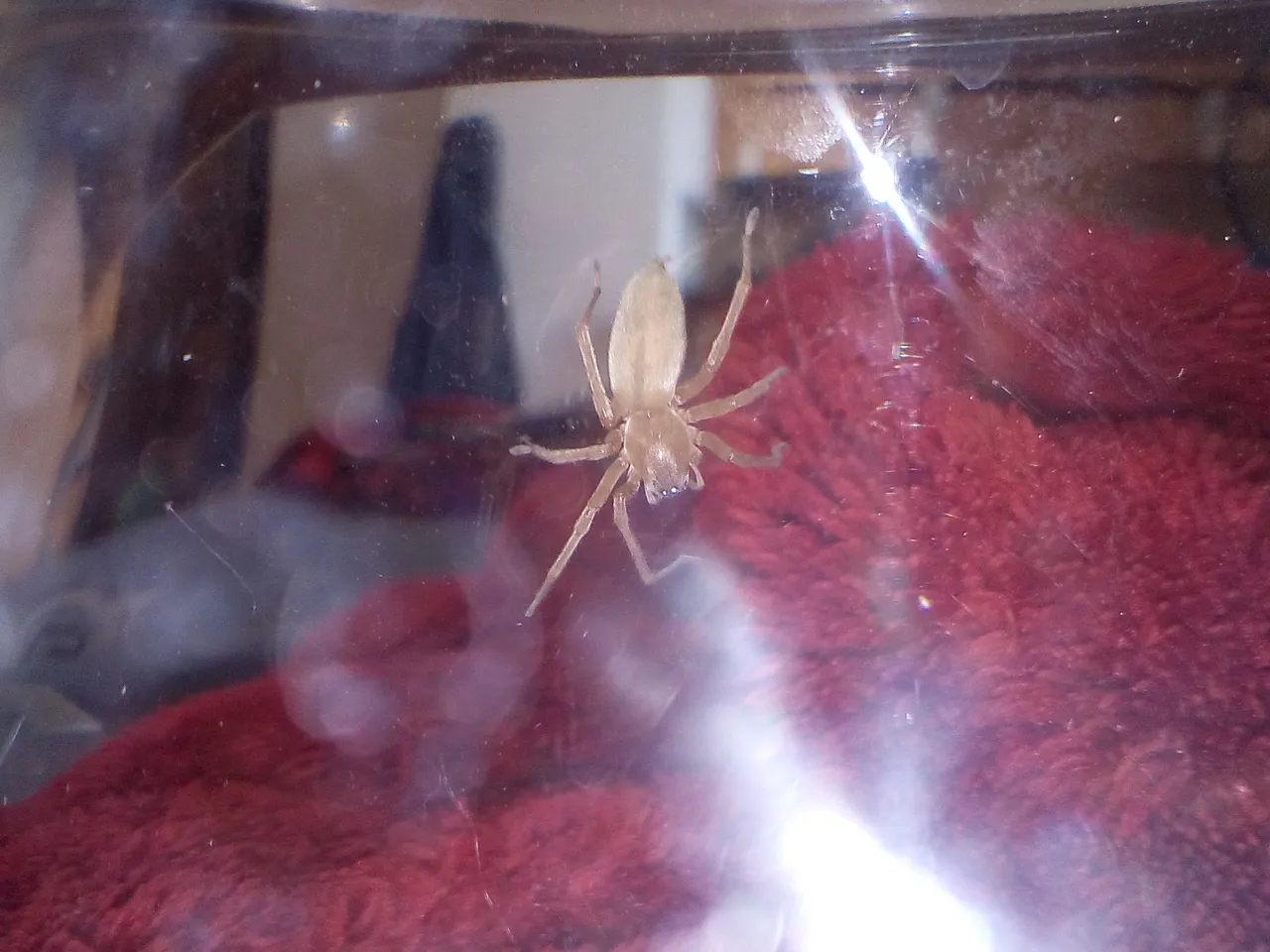Taxon:
- Class: Arachnida
- Order: Araneae
- Infra-Order: Araneamorph (true spiders)
- Family: Cheiracanthiidae
- Genus: Cheiracanthium
- Species: C. furculatum
Female
Around 20mm in body length. Leg span of approximately 35mm diagonally.
Looks like the male, larger, but without the enlarged tarsi on the pedipalps and with a longer and larger abdomen. Black spot on epigyne.
Male
Around 10mm in body length. Leg span of approximately 25mm diagonally.
Cephalothorax:
Pale yellow carapace and sternum. No markings or patterns. Long jaws, dark brown, almost black. Pedipalps are yellow fading into long and thin, but swollen black tarsi.
Abdomen:
Abdomen pointy oval, yellow with greenish tint, faint heart mark, almost same length as cephalothorax.
Legs:
Long yellow legs, of which 1st pair longest and 3rd pair shortest, legs ending in dark brown of tarsus.
ABOUT THE GENUS
This genus of long-legged sac spider is endemic to Africa, having been confirmed to occur in over 20 countries. In South Africa, they’ve been reported in all 9 provinces, thus the name the Common House sac spider. They are also found in several other countries, mainly in what’s referred to as the Old World, which are Europe and Asia along with Africa.
As mentioned above, these spiders are harmless, only leaving you with a bit of pain from the bite if they feel threatened. Like all sac spiders, Cheiracanthium spiders build a sheet of tough webbing in tight spaces such as the folds of clothes, corners of cornices, etc. These sacs are a temporary hide-away where the spider can rest, shed, mate, and lay eggs. Their safe space.
They’re very skittish spiders so a gentle touch to their hind legs with something soft like a paint brush or your finger (very gently) will get them running away, making them easy to remove from clothing.
Another amazing fact about the spiders in the genus of Cheiracanthium is that they’re partake in omnivorous behaviour! Unlike most spiders who exclusively eat other arthropods and even reptiles, birds, and mammals (i.e carnivorous), Cheiracanthium spiders are one of the few that sometimes eat plant matter, like nectar. This may give them an advantage over other spiders in terms of energy 2.




